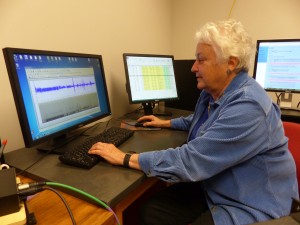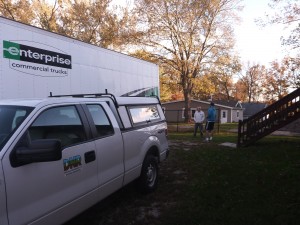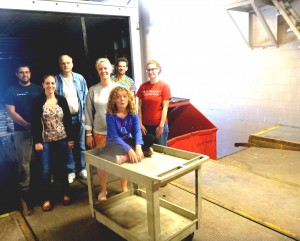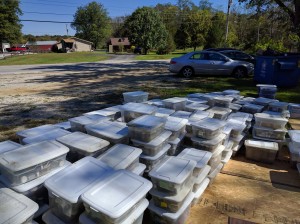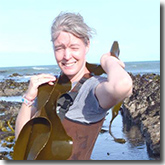We have several voucher specimens belonging to the order Salmoniformes, ray-finned fish like salmon, trout, chars, in our holdings, including the Lake Whitefish Coregonus clupeaformis. While common across most of their range, some are considered of special concern or vulnerable in the State of Ohio, for example, the Lake Trout Salvelinus namaycush. Another Coregonus species, the Cisco, is critically imperiled in Ohio, and Bloaters Coregonus hoyi (the hero of Monday’s post) were never found in Lake Erie due to the lake’s shallowness. Bloaters were extirpated from deeper Lake Ontario where the U.S. Fish & Wildlife Service is now reintroducing them. The specimens from the Tom Simon collection are the first Bloater vouchers (e.g. OSUM 117265) that we have for the OSUM fish collection.
By the way, a voucher specimen is a preserved specimen of an identified taxon permanently stored in our collection and retained as a reference. It has a unique identifier (e.g. OSUM 117265) and can be retrieved and used in scientific studies.
When moving the specimens, we needed many helping hands. Here Kai Raab, husband of OSUM Director Meg Daly, assisted with accession of some of the Tom Simon collection.
All Bloater specimens from the Tom Simon collection were trawled by the United States Geological Survey (USGS) during their surveys and have inflated gas bladders due to being brought from depths quickly.
The Bloater’s specific epithet, C. hoyi, is derived from the name of the man who originally discovered it while dredging in Lake Michigan, Dr. P. R Hoy. Dr. Hoy engaged ichthyologist Dr. James P. Milner to describe the species.
Coregonus is a diverse genus of fish with at least 68 described species. Some are easier to tell apart by morphology than others. Lake Whitefish, Coregonus clupeaformis, are separable from the Cisco and Bloater in the field by observing the mouth position: subterminal versus terminal, respectively. Note the terminal mouth, pointing forward, in the Cisco on the right.
Other species are quite similar in appearance and hard to separate in the field. For example, the Cisco and the Nipigon Cisco C. nipigon, as well as the Bloater and the Kiyi C. kiyi look very similar and occur sympatrically in some water bodies. For these and other species in the genus one must count the gill rakers to separate them. Gill rakers are the bony comb-like structure that serve to sieve food as the fish expels water through its gills while it is eating. The gill rakers are shown under the gill cover in the images below, to the left of the gill filaments that function to transfer oxygen from the water to capillaries. Once the food particles are caught on the rakers the fish can swallow them.
Cisco were found to have gill raker counts from 36 to 50, with a mean of 43 in Lake Saganaga and adjacent Minnesota border lakes. While gill raker counts for the Nipigon Cisco range between 45 to 70 with a higher mean than for the Cisco at 56.
Here are some additional species in the genus Coregonus; some are easy to tell apart by their location of occurrence.
Reference:
Etnier, David A., and Christopher E. Skelton (2003). Analysis of Three Cisco Forms (Coregonus, Samonidae) from Lake Saganaga and Adjacent Lakes near the Minnesota/Ontario Border. Copeia, Vol. 4, 739-749.
 About the Author: Marc Kibbey is Associate Curator of the Fish Division at the Museum of Biological Diversity.
About the Author: Marc Kibbey is Associate Curator of the Fish Division at the Museum of Biological Diversity.
*** We would like to hear from you – please leave a comment ***













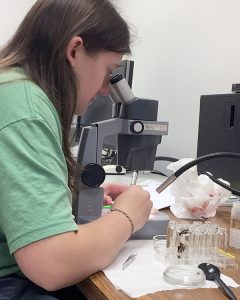

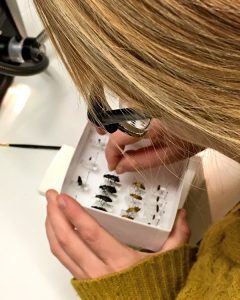

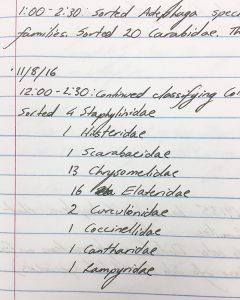

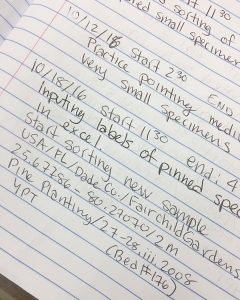
 Last semester we of the Triplehorn Insect Collection offered our first
Last semester we of the Triplehorn Insect Collection offered our first 
















